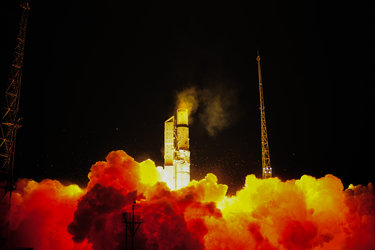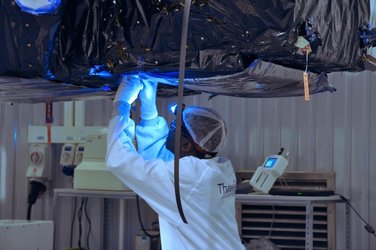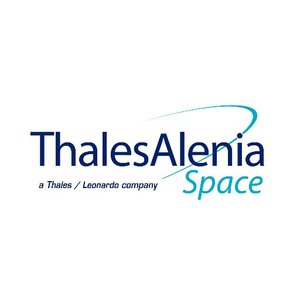Yvan Baillion: Thales Alenia Space Project Manager
Since ESA selected Thales Alenia Space as the Sentinel-3 satellites’ Prime Contractor, Yvan Baillion has led an industrial consortium of some 115 European companies to design and build the two-satellite mission.

Yvan Baillion, a native of France, graduated from the Ecole Nationale Supérieure de l’Aéronautique et de l’Espace in Toulouse as a Space Engineer in 1993. Right after, he joined Thales Alenia Space (formerly known as Aerospatiale) as a mechanical analysis engineer on several projects, including Huygens probe, MERIS and IASI instruments. In 1999, he moved to the Advanced Projects section of the Observation & Science Directorate as the system engineering and bid manager. He led majors bids and projects such the five Proteus platforms bid and several ESA Earth Explorer advanced phases. From 2001 to 2003, he was responsible for managing the interfaces of the Calipso payload – a lidar developed in the USA – and finalised the users’ manual of the Proteus multi-mission platform. In July 2003, he became project manager of the advanced phases of Spectra, one of the candidates for the ESA Earth Explorer 6 mission. In early 2005, he became in charge of Copernicus bids and advanced phases in Thales Alenia Space and participated to the definition of the Sentinel missions. In 2005 Yvan began his adventure with Sentinel-3 by managing the definition phase until early 2007, followed by the implementation phase.
ESA: What role does the Prime Contractor play in the Sentinel-3 mission?
Yvan Baillion
Thales Alenia Space has the full responsibility to define and develop the Sentinel-3 Space Segment: the two satellites required to fulfil the mission and its in-orbit deployment (Launch & Early Orbit Phase and In-Orbit Validation). Starting from the requirements established by ESA, the prime contractor starts the preliminary definition of the satellite and builds the consortium for development. This includes the platform and the different instruments constituting the overall satellite. Each element is then developed and validated under our control before the final satellite assembly, integration and tests. The launch campaign is then performed under our responsibility before transferring the satellite property to ESA.
The Space Segment Prime Contractor is furthermore responsible for the development and prototyping of the first level of the remote sensing data processing chains, as this part is driven by the satellite and instruments’ design and characteristics.
Finally, the Prime Contractor is also responsible for providing ESA with support for the launch and ground segment procurements.
ESA: What have you been responsible for throughout the process of designing, building and launching of Sentinel-3?
Yvan Baillion
Since 2005 – in the early phases of Sentinel-3 and even Copernicus – I have been in charge in Thales Alenia Space of the different steps leading towards the launch of Sentinel-3A. This started with the general feasibility studies (phase 0), then the preliminary design phase (phases A/B1) and finally the implementation phase (Phase B2/CD). This also includes the responsibility of managing the tenders phases to answer to the ESA Request for proposal.
My role was to represent the whole consortium and to coordinate the teams involved in these different tasks to achieve the different objectives of this programme. These teams include more than 100 people in Thales Alenia Space and more than 100 sub-contractors representing more than 1000 people mostly around Europe.
ESA: Each satellite will carry three different instruments to measure sea-surface topography, sea- and land-surface temperature and ocean- and land-surface colour. What challenges did this pose in terms of design?
Yvan Baillion
The Sentinel-3 satellites are indeed carrying several instruments of different types (optical and microwave), and are also multi-missions (oceanography, but also land monitoring and even atmosphere applications). Many challenges are associated to this particularity.
The first one lies in the preliminary definition of the satellite and in the selection of the best compromise when considering possible contradicting requirements coming from the different missions.
The second challenge is to ensure the compatibility between the different instruments, avoiding disturbances between them. This challenge is even more important when considering the size of the satellite, compatible with small launcher class. This compactness was one of the key requirements of the programme to ensure its cost effectiveness.
This last point is quite important. We often underline the complexity of the multi-instrument characteristics of Sentinel-3, but we shall also underline the associated benefits. With such a satellite design, we have the possibility to put into orbit in a very cost-efficient manner several key remote sensing capabilities for a wide panel of users. Moreover, having several instruments on the same satellite offer the possibility to provide synergetic products derived from the combination of the remote sensing data provided by these different instruments. As an example, vegetation products will be provided from the combination of the Ocean & Land Colour instrument (OLCI) and Sea & Land Surface Temperature Radiometer (SLSTR) on-board Sentinel-3.
ESA: What have been the most rewarding aspects of working on this mission?
Yvan Baillion
There are a lot of rewarding aspects of working on such a mission. The first to come to my mind is the fact I had the opportunity to lead this operational programme from the very early phase in 2005 when Sentinel-3 was only ‘requirements on paper’ to the launch of the first Sentinel-3 satellite. This is an extraordinary experience, opening a long-term perspective as several other satellites are planned to come for this mission.
Nevertheless, the most rewarding aspect is still to come: to see the first Sentinel-3 satellite in-orbit delivering valuable data to the users and to have them fully satisfied. This will be the best reward for the whole team.
Finally, it is important to underline another rewarding aspect: to have successfully managed all the challenges encountered along the Sentinel-3 satellites’ development, keeping the whole team (industrial team and agency team) unified and focused on the objectives. Difficulties during such a long programme generate stresses and tensions within a team. Successfully managing these difficult periods together as a team is clearly one of the most rewarding aspect of my work on this very complex mission.
Editor's note:
This is one in a series of interviews with a few of the key people that are involved in the Sentinel-3 mission. Please check back as further interviews will be added to over the coming weeks.








